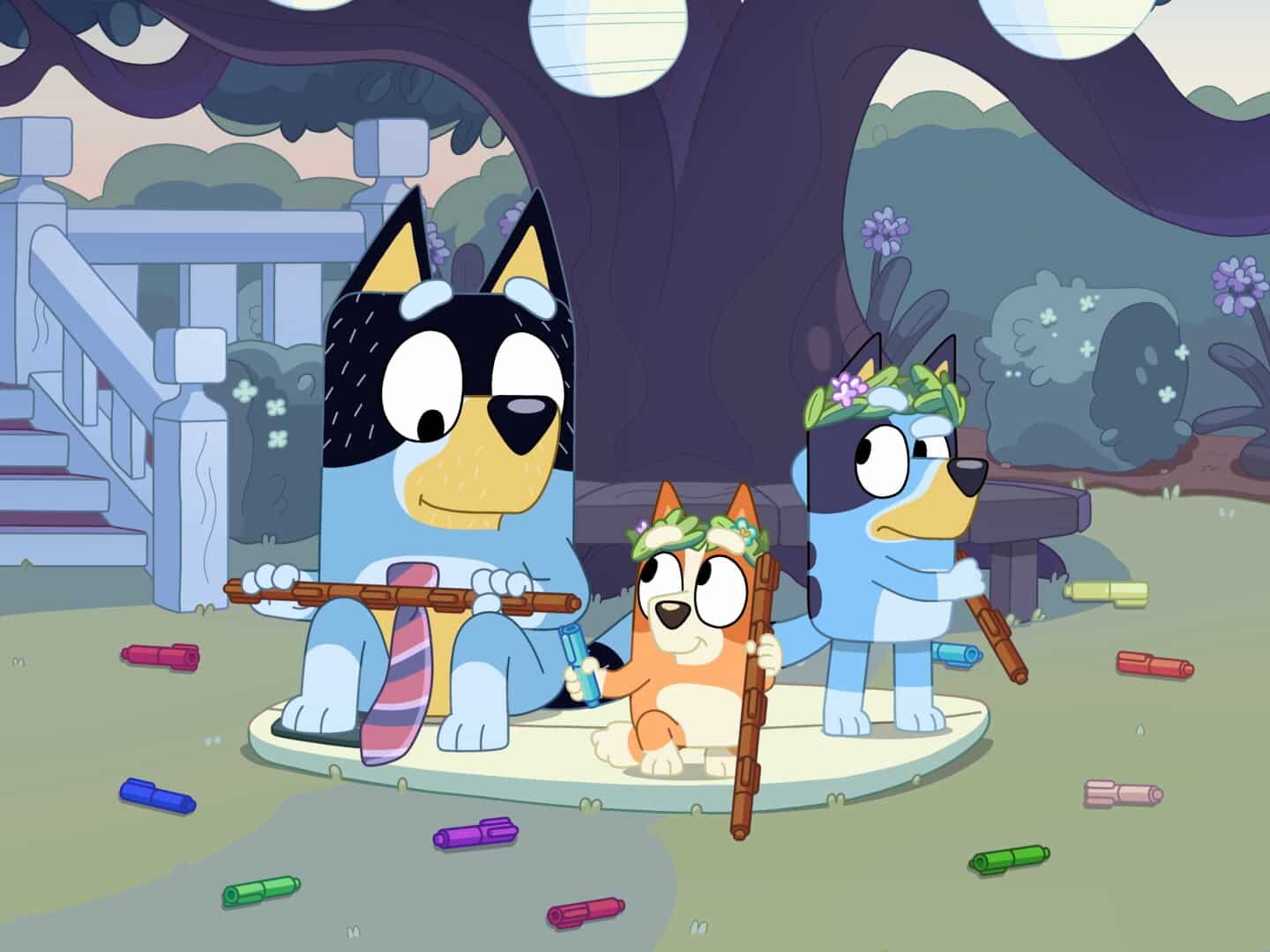
In the last couple of months, a new cartoon seems to have exploded onto screens big and small everywhere. Enter Bluey, a cartoon hailing from Australian creative studio Ludo Studios- which boasts multiple Emmy awards.
Bursting from our screens on the streaming service Disney+, is the adorable little blue heeler, Bluey, and her family. These eight-minute bite-size episodes chronicle the lives of Bluey, her little sister Bingo, and her parents Bandit and Chilli. They also introduce a wide array of characters of varying ages and abilities, allowing children and adults everywhere to feel seen and represented.
These stories are praised for the child-friendly way that they deal with the larger issues of navigating childhood, like grief, loss, disability, and the many struggles of parenting.
The easy-to-understand and open-ended way that these issues are presented, while still remaining light-hearted and enjoyable to watch, is largely why this innovative series has won the hearts of adults and children alike.
Because of all these heartwarming reasons, Bluey has very quickly gained much popularity among parents looking for something wholesome and educational to show their kids.
However, if you’re looking for more reasons to love Bluey (or understand why your kids are so obsessed with them) here are four more reasons why Bluey has become a household name for families everywhere!
Positive Values and Lessons:
Bluey is known for its wholesome content and positive messages. The show often imparts valuable life lessons, promotes empathy, and encourages positive behaviour, making it appealing to parents who seek quality programming for their children.
Many of the episodes centre around Bluey’s dynamic with her younger sister, Bingo, who are six and four respectively. Parents with more than one child can relate to the difficulty of keeping peace on the home front, especially with sibling rivalry and jealousy that may arise among young children.
In episodes of Bluey, writers do not shy away from showing these dynamics, but instead focus on how Bluey and her sister overcome such challenges. For example, Bluey is a much more outspoken character compared to her younger sister. One of the episodes touches on Bingo exploring her “big girl bark”, learning to express her feelings and desires independently of her older sister.
It also highlights the fact that even though the two siblings are different, and they might fight at times, the sisters share a unique and close bond, and love each other very much.
Relatable Family Dynamics:
The show features relatable family dynamics, portraying everyday situations that families encounter. Several of the episodes take the focus away from the children and instead focus on the struggles that the parents may face.
In one episode, titled “Baby Race”, the plot centres around Bingo’s mother, Chilli, who struggles with Bingo being a later bloomer than the other babies in her playgroup.
I believe that this struggle is something that many parents can relate to, especially in the highly competitive nature of Singapore.
Showing the more vulnerable sides of parenting helps parents feel seen, and perhaps draws to light that they are not alone in their struggles to raise their children to the best of their abilities.
Not only that, there are several different dynamics shown to children in the series. Some of Bluey’s friends from kindergarten have parents enlisted in the Army, separating them for many months.
There are also children of divorce, a topic that many parents find a challenge to communicate to their children.
Through seeing all these experiences and dynamics on screen, parents appreciate the realistic and heartwarming portrayal of family life, which helps children relate to their own experiences.
Encourages Creativity and Imagination:
The show emphasizes imaginative play, fostering creativity in children. Many of the episodes are centred around Bluey and Bingo’s imaginative games, showing that children can find a vibrant and immersive imaginative world just about anywhere.
These creative games are also participated in by both parents, perhaps showing parents how it encourages their children to foster their imagination when they show interest and participate in their children’s invented games.

Inclusivity and Diversity:
Bluey is praised for its inclusivity and diverse representation. Some of the characters featured in Bluey have a wide range of different abilities.
For example, Dougie, a new character introduced in season 3, is a non-speaking pup who uses Auslan, Australian Sign Language. He is learning to use an augmentative and alternative communication (AAC) device that allows him to speak using his eyes, but for the most part, he communicates through facial expressions and gestures.

The disabilities of this character are not the main focus of the episode but are shown as just a different way that the character navigates the world. This helps children perhaps understand that their peers with disabilities may not always need to be treated differently but simply included with their different needs accommodated.
Having characters of different abilities reflects a more inclusive and diverse world, which is important for parents seeking diverse and representative content for their children.
In summary, Bluey has won the favour of parents due to its positive values, relatable content, humour, emphasis on creativity, inclusivity, and high production quality, making it a well-rounded and enjoyable choice for children’s programming.
